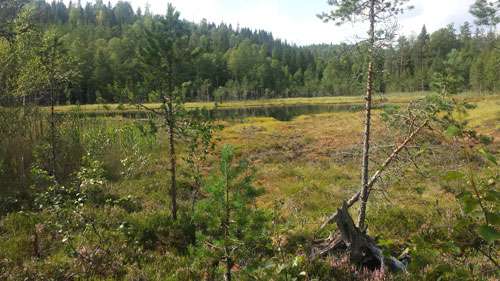Biodiversity can offset climate change

The objective of the large-scale joint call for proposals on ecosystem effects issued by the Research Council of Norway for the September 2014 deadline was to generate a wider understanding of natural responses to changes in climate and the environment. Four Research Council programmes are working together to encourage the R&D community to join forces for more integrated research efforts on urgent issues.
Future direction of environmental research
"There is a great need for a coordinated research effort to enhance our understanding of the key environmental and climate challenges," says Vidar Skagestad, Director of the Research Council's Department for Land-based Bioresources and Environmental Research. Referring to the new Miljø21 environmental R&D strategy, he reiterates the point that environmental research cannot be carried out in isolation from climate research, and vice versa. Climate and the environment are two sides of the same coin, and cannot and should not be studied independently of each other.
"This joint call for proposals stakes out the direction we believe future environmental research should take," explains Mr Skagestad. "When we launch our new environmental research programme in 2015, we need to take an even broader and more integrated approach to research."
Biodiversity loss as serious as climate change
The need to understand the connections between biodiversity and climate also strikes a chord with Minister of Climate and Environment Tine Sundtoft:
"There is no doubt that climate change is one of the biggest environmental challenges we face today. But the loss of biodiversity is just as great a challenge. We must view these environmental issues in the same context and find solutions that safeguard both the climate and our natural surroundings."
The minister believes that research is an integral part of these efforts:
"We must learn more about how to protect functioning ecosystems that provide valuable ecosystem services, and how the environment is being affected by human activity. We need more knowledge to be able to prevent major negative impacts from climate change."
Climate and biodiversity interrelated
Species diversity was the theme of the conference "Biodiversity under Pressure" recently organised by the Research Council programme on Norwegian Environmental Research towards 2015 (MILJO2015). This is a comprehensive, cross-disciplinary research programme designed to generate knowledge about key environmental questions and create a foundation for designating future policy. The programme concludes next year.
An important backdrop for the conference was the recently published fourth edition of Global Biodiversity Outlook (GBO-4) by the UN Convention on Biological Diversity. The report urges intensified efforts to prevent the continued destruction and degradation of natural habitats, which is the single most important driver of species extinction.
"Ecosystems are commonly thought of as something responding passively to climate change," says Professor Dag O. Hessen of the University of Oslo's Department of Biosciences. "But we often overlook the effects the ecosystems themselves have on the climate, by storing carbon and controlling the circulation of water. We also tend to forget how fundamentally dependent we are on nature's goods and services." His research includes studying how increased temperatures affect aquatic biodiversity in a project under the MILJO2015 programme.
"Take the peatlands as an example," continues Professor Hessen. "They are an immense carbon sink, and they also function like a sponge to absorb large amounts of water. Peatlands can prevent flooding, and after the most recent floods it's easy to understand what an important function that is."
The capacity of peatlands to store carbon means there is less carbon going into the atmosphere, while their water-absorbing function can limit the destruction of flooding caused by climate change. Two centuries ago, peatlands covered 10 per cent of Norway but this has declined dramatically due to extensive ditching and draining. The professor's example illustrates the critical point that ecosystems can hold great value beyond what we can see.
Provided by The Research Council of Norway
















